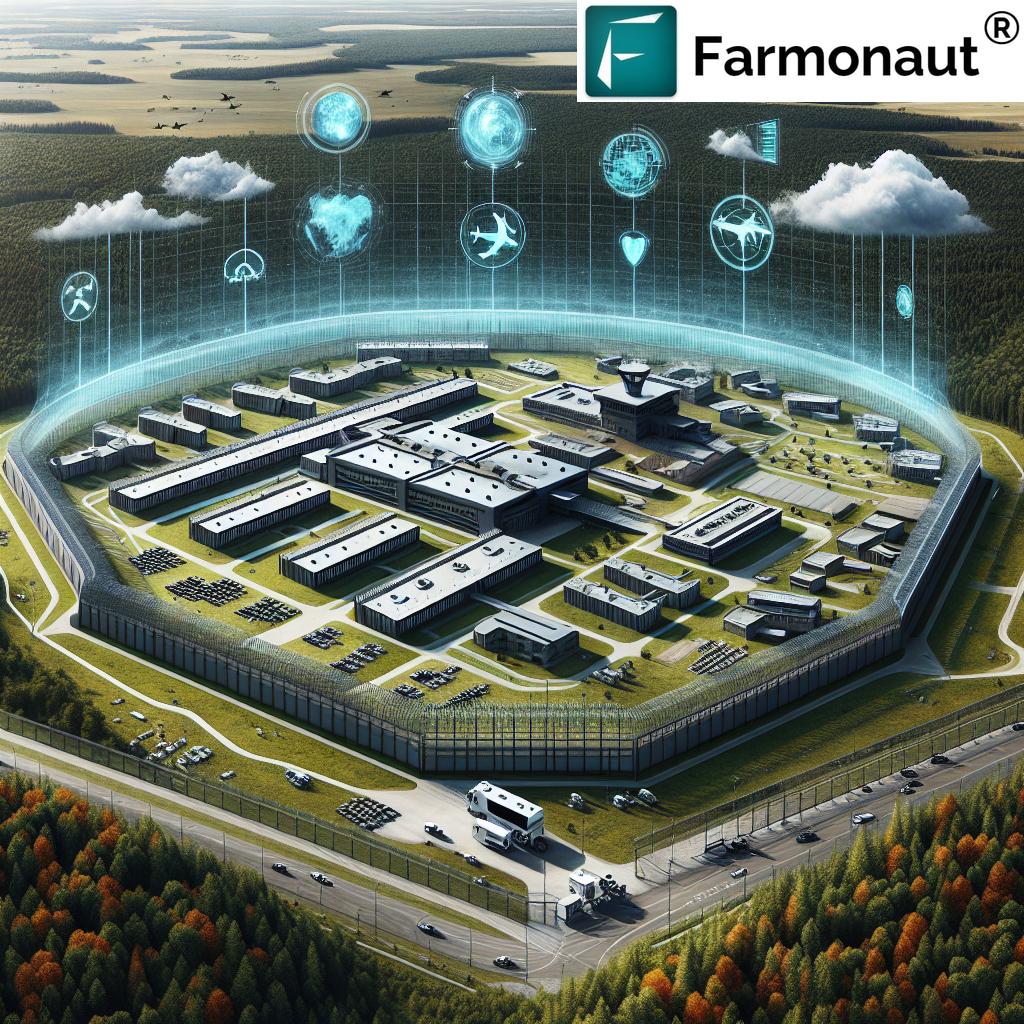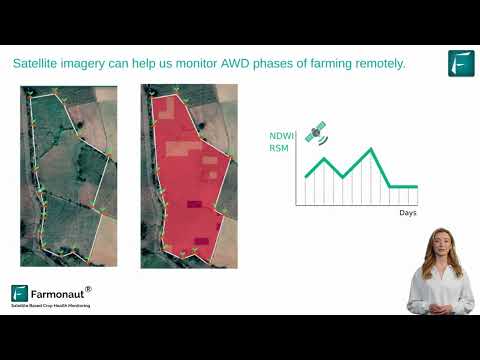Revolutionizing Prison Security: Oregon’s Cutting-Edge Drone Detection Technology Combats Contraband Smuggling
“Over 90% of U.S. prisons now face drone-related security threats, with contraband smuggling attempts rising exponentially since 2015.”
In the ever-evolving landscape of correctional facility security, we find ourselves at the forefront of a technological revolution. The rise of unmanned aerial vehicles (UAVs) has presented new challenges to prison security systems nationwide, prompting the development of innovative counter-drone solutions. Today, we’ll explore how Oregon’s Eastern Oregon Correctional Institution (EOCI) is leading the charge in implementing cutting-edge drone detection technology to combat contraband smuggling and enhance overall safety.
The Growing Threat of Drone-Based Contraband Smuggling
As we delve into this pressing issue, it’s crucial to understand the scope of the problem. Correctional facilities across the United States are grappling with a surge in contraband smuggling attempts via drones. These unmanned aerial vehicles have become a preferred method for delivering illegal items such as cellphones, drugs, razors, and tobacco products into prisons. The ability of drones to bypass traditional security measures has made them a significant concern for prison administrators and law enforcement agencies alike.
EOCI Superintendent David Pedro highlights the gravity of the situation: “Contraband is not welcomed inside any prison.” This statement underscores the urgent need for innovative solutions to address this growing security threat.
Enter Zing Drone Solutions: A Local Innovator Tackles a National Problem
In response to this challenge, a new local technology company has stepped up to enhance security at EOCI. Zing Drone Solutions, founded by Ian Annase, has developed the Z-Scan system – a state-of-the-art drone detection scanner and identification system designed to secure airspace around critical areas.
Annase’s journey from app developer to drone security innovator is a testament to the power of entrepreneurship and adaptability. After co-founding several tech startups and working on drone delivery systems for major retailers, Annase recognized the potential for drone detection technology in the correctional facility market.
The Z-Scan System: How It Works
The Z-Scan system utilizes advanced antenna and radio frequency technology to detect and track unmanned aircraft within a 2-mile radius of the prison. This cutting-edge solution provides correctional facilities with:
- Real-time alerts of drone presence
- Detailed flight path tracking
- Pilot location identification
By offering these capabilities, the Z-Scan system empowers prison security teams to respond swiftly and effectively to potential contraband smuggling attempts. The ability to pinpoint the drone operator’s location allows law enforcement to investigate and apprehend those responsible for these illegal activities.
EOCI’s Implementation of Z-Scan: A Case Study in Innovation
The Eastern Oregon Correctional Institution’s adoption of the Z-Scan system marks a significant milestone in the fight against drone-based contraband smuggling. By integrating this technology into their existing security infrastructure, EOCI has dramatically improved its ability to monitor and protect its airspace.
Assistant Superintendent Ty Stewart provides historical context: “Back 20 years ago, they were using sling shots to try to put stuff over the fence. Now they’re using drones you can buy at Walmart.” This evolution in smuggling tactics necessitates an equally advanced response from correctional facilities.

The Impact of Drone Detection Technology on Prison Security
The implementation of drone detection technology at EOCI and other correctional facilities across the nation represents a paradigm shift in prison security systems. By securing the airspace around these critical areas, we’re witnessing a significant leap forward in the fight against contraband smuggling. The benefits of this technology extend beyond simply preventing illegal deliveries; they include:
- Enhanced overall safety for inmates and staff
- Reduced availability of drugs and weapons within prison walls
- Improved ability to maintain order and discipline
- Increased deterrence for potential smugglers
“Advanced drone detection systems can identify and track up to 200 drones simultaneously within a 5-mile radius of prison facilities.”
Expanding Beyond Prisons: Securing Critical Infrastructure
While our focus has been on correctional facilities, it’s important to note that the applications of drone detection technology extend far beyond prison walls. The Z-Scan system and similar solutions are being deployed to secure airspace around various critical areas, including:
- Airports
- Government buildings
- Military installations
- Public events
This widespread adoption underscores the versatility and importance of counter-drone solutions in our increasingly drone-populated world.
The Future of Prison Security: Integrating Technology and Traditional Methods
As we look to the future of correctional facility security, it’s clear that the integration of advanced technologies like drone detection will play a crucial role. However, it’s equally important to recognize that these innovations are not meant to replace traditional security measures entirely. Instead, they serve to complement and enhance existing protocols.
To illustrate this point, let’s examine a comparison of traditional security measures and drone detection technology:
| Security Aspect | Traditional Methods | Drone Detection Technology |
|---|---|---|
| Airspace Monitoring | Limited visual observation | Continuous 360° surveillance up to 5 miles |
| Contraband Detection | Physical searches, K9 units | Early warning of potential aerial deliveries |
| Response Time | Variable, depending on detection method | Near-instant alerts (typically <5 seconds) |
| Coverage Area | Limited to physical perimeter | Up to 78.5 square miles (5-mile radius) |
| Effectiveness Against Aerial Threats | Low to moderate | High, with real-time tracking and identification |
This comparison highlights the significant advantages that drone detection technology brings to the table, particularly in addressing the unique challenges posed by aerial threats.
The Role of Innovation in Addressing Emerging Threats
The story of Zing Drone Solutions and the Z-Scan system serves as a powerful example of how innovation can address emerging security challenges. Annase’s journey from app developer to counter-drone technology pioneer illustrates the importance of adaptability and forward-thinking in the face of evolving threats.
As correctional facilities and other critical infrastructure sites continue to face new and unexpected challenges, the ability to rapidly develop and deploy innovative solutions will be crucial. The success of the Z-Scan system at EOCI demonstrates the potential for agile, technology-driven approaches to enhance security across various sectors.

The Broader Impact: Beyond Contraband Prevention
While the primary focus of drone detection technology in prisons is to prevent contraband smuggling, its implementation has far-reaching implications for the overall management and safety of correctional facilities. Some additional benefits include:
- Improved situational awareness for security personnel
- Enhanced ability to monitor and respond to potential escape attempts
- Reduced risk of drone-based surveillance of prison layouts and routines
- Increased deterrence for external parties attempting to interfere with prison operations
These wide-ranging benefits underscore the transformative potential of drone detection technology in the correctional environment.
Challenges and Considerations in Implementing Drone Detection Technology
While the benefits of drone detection systems are clear, it’s important to acknowledge the challenges and considerations that come with their implementation. Some key factors to consider include:
- Initial costs and ongoing maintenance requirements
- Training staff to effectively use and respond to the new technology
- Ensuring compliance with relevant laws and regulations regarding airspace monitoring
- Balancing security needs with privacy concerns for surrounding communities
- Adapting to rapidly evolving drone technologies and potential countermeasures
Addressing these challenges requires a comprehensive approach that involves collaboration between technology providers, correctional facility administrators, and policymakers.
The Role of Public-Private Partnerships in Advancing Prison Security
The success of the Z-Scan system at EOCI highlights the potential for fruitful collaborations between private technology companies and public correctional institutions. These partnerships can drive innovation and lead to more effective security solutions tailored to the unique needs of prisons and other critical infrastructure sites.
By fostering an environment that encourages such collaborations, we can accelerate the development and deployment of cutting-edge security technologies, ultimately making our correctional facilities safer and more secure.
Looking to the Future: The Evolution of Drone Detection Technology
As we consider the future of prison security and drone detection technology, several exciting possibilities emerge:
- Integration with artificial intelligence for predictive threat analysis
- Development of non-invasive drone mitigation techniques
- Enhanced data sharing and coordination between correctional facilities
- Incorporation of augmented reality for improved situational awareness
- Adaptation of technology for use in urban environments and other challenging settings
These potential advancements underscore the dynamic nature of the field and the ongoing need for innovation in prison security systems.
Conclusion: A New Era in Prison Security
The implementation of drone detection technology at the Eastern Oregon Correctional Institution marks the beginning of a new era in prison security. By leveraging cutting-edge solutions like the Z-Scan system, correctional facilities are better equipped to address the growing threat of drone-based contraband smuggling and enhance overall safety.
As we move forward, the continued development and refinement of these technologies will play a crucial role in shaping the future of correctional facility management. The success story of EOCI and Zing Drone Solutions serves as an inspiring example of how innovation and collaboration can lead to meaningful improvements in public safety and security.
In conclusion, the revolution in prison security brought about by drone detection technology is not just about preventing contraband – it’s about creating safer, more secure environments for inmates, staff, and surrounding communities. As these technologies continue to evolve, we can look forward to a future where our correctional facilities are better protected against emerging threats, ultimately contributing to a safer society for all.
FAQ Section
Q: How effective is drone detection technology in preventing contraband smuggling?
A: Drone detection technology has proven highly effective in identifying and tracking unauthorized drones near correctional facilities. While it doesn’t physically stop drones, it provides early warning and detailed information that allows security personnel to respond quickly and prevent contraband deliveries.
Q: Can drone detection systems distinguish between authorized and unauthorized drones?
A: Yes, advanced drone detection systems can be programmed to recognize authorized drones used for legitimate purposes, such as facility inspections or approved deliveries. Unauthorized drones trigger alerts for security staff to investigate.
Q: How far can these systems detect drones?
A: The range varies depending on the specific system, but many, including the Z-Scan system, can detect drones within a 2-5 mile radius of the protected area.
Q: Are there any privacy concerns with drone detection technology?
A: While drone detection systems primarily focus on identifying unmanned aerial vehicles, there can be privacy considerations, especially in urban areas. Manufacturers and users must ensure compliance with local laws and regulations regarding airspace monitoring.
Q: How does weather affect the performance of drone detection systems?
A: Most modern drone detection systems are designed to operate effectively in various weather conditions. However, extreme weather events may impact performance. It’s important to choose systems rated for the specific environmental conditions of the installation site.
Earn With Farmonaut: Affiliate Program
Earn 20% recurring commission with Farmonaut’s affiliate program by sharing your promo code and helping farmers save 10%. Onboard 10 Elite farmers monthly to earn a minimum of $148,000 annually—start now and grow your income!







